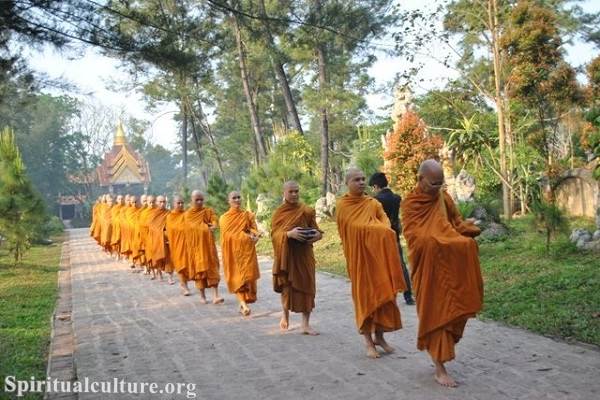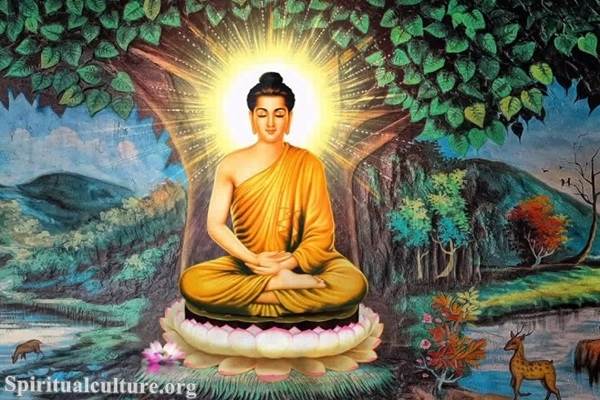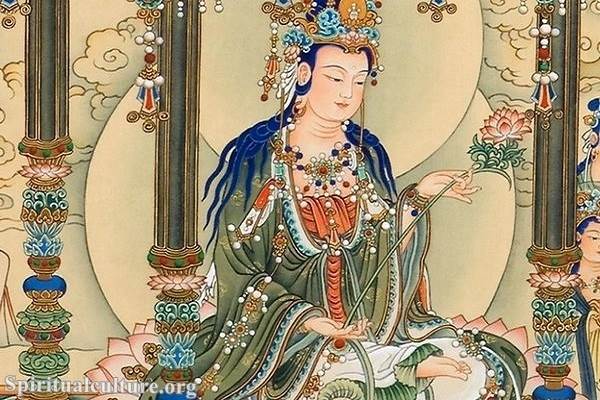Conflict is as old as humanity. Whether it arises within a family, between nations, or in the quiet battle of our own mind, conflict disturbs harmony and fractures connection. But in the midst of discord, Buddhism offers a way—not by defeating an enemy, but by dissolving the very root of the fight.
As Spiritual Culture, we invite you to step into this profound vision. This article explores how Buddhist philosophy, meditation, and ethical principles bring about true conflict resolution. Whether you are facing personal turmoil, communal tension, or global unrest, the teachings of the Buddha shine a gentle light on the path to healing.
Let us journey together into a wisdom tradition that does not ask, “How do we win?” but “How do we understand, transform, and live with peace?”
The Nature of Conflict in Buddhist Thought
Conflict Begins in the Mind
According to the Buddha, conflict is not just a social or political phenomenon. It begins within. The root cause lies in the three poisons—greed (lobha), hatred (dosa), and delusion (moha). These are not merely moral failings, but energetic disturbances that cloud our perception.
“It is not external enemies that trouble us. It is the storm of our desires, aversions, and ignorance.” — Spiritual Culture
In the Dhammapada, the Buddha teaches:
“All tremble at violence; all fear death. Putting oneself in the place of another, one should not kill nor cause another to kill.” (Dhammapada 129)
This core insight reverses the usual way we deal with conflict. Instead of reacting outwardly, we are called to look inward. From this perspective, external peace becomes impossible without inner transformation.
Understanding the Buddhist Framework for Resolving Conflict
The Four Noble Truths Applied to Conflict
Every conflict, like every suffering, can be understood through the Four Noble Truths:
- There is suffering – Conflict causes pain, division, loss.
- There is a cause of suffering – Often attachment to being right, to power, or to blame.
- There is an end to suffering – Peace is possible.
- There is a path – The Eightfold Path offers a roadmap.
By applying this framework, even the most difficult disputes become opportunities for awakening rather than arenas for aggression.
The Eightfold Path as a Peace Strategy
The Eightfold Path can be reimagined as a guide for resolving conflict:
- Right View: Seeing all beings as interconnected. Recognizing that your suffering and mine are not separate.
- Right Intention: Replacing hostility with goodwill. Setting an intention not to harm.
- Right Speech: Speaking truthfully but kindly. Avoiding slander, gossip, or divisive talk.
- Right Action: Choosing non-violence and fairness in behavior.
- Right Livelihood: Ensuring that our work and way of life do not perpetuate conflict.
- Right Effort: Letting go of resentment and cultivating patience.
- Right Mindfulness: Observing our thoughts and reactions with clarity.
- Right Concentration: Maintaining focus and calm during emotional storms.
Together, these steps dismantle the architecture of conflict and build a foundation for harmony.
Cultivating Inner Peace: The Prerequisite to Outer Peace
Meditation as Conflict Prevention
One of the most powerful tools in Buddhism is meditation—not only as a path to enlightenment but also as a method for conflict resolution. In particular, Metta Bhavana (Loving-Kindness Meditation) transforms inner anger into expansive compassion.
“May all beings be happy. May they be safe. May they be free from suffering.” – Traditional Metta Prayer
When practiced regularly, loving-kindness meditation softens the hard edges of our judgment. We begin to see even our opponents not as threats but as fellow sufferers.
The Role of Mindfulness in De-escalation
Mindfulness (sati) creates space between stimulus and response. When someone insults or provokes us, mindfulness allows us to pause. In that pause lies the potential for a different outcome.
“When the mind is like a still pond, even a stone thrown cannot stir its depths.” — Spiritual Culture
Instead of reacting with anger, we respond with awareness. This changes everything.
Non-Violence (Ahimsa): The Ethical Foundation of Peace
Ahimsa in Speech, Thought, and Deed
The principle of ahimsa, or non-harming, extends beyond physical violence. It includes the violence of words, emotions, and even thoughts.
Buddhism teaches that harsh speech wounds deeply. Passive aggression, cold silences, or moral superiority—these too are forms of subtle violence. True peace requires us to purify not just our behavior, but our very intention.
“Hatred does not cease by hatred, but only by love; this is the eternal law.” (Dhammapada 5)
This is not idealism. It is a radical commitment to transformation.
Real-Life Applications: Buddhist Approaches to Conflict Today
Community Mediation in Buddhist Cultures
In countries like Thailand, Myanmar, and Sri Lanka, Buddhist monks often serve as community mediators. Their role is not to judge but to listen. Through Dhamma talks, they help disputants understand the deeper roots of conflict and cultivate mutual respect.
Restorative Justice and Reconciliation
Buddhist principles have influenced restorative justice models, especially in places like Bhutan and parts of Southeast Asia. These models focus on healing, not punishment. Offenders are encouraged to make amends, victims to share their truth, and communities to rebuild trust.
The Dalai Lama’s Example of Compassionate Resistance
Perhaps no figure embodies Buddhist conflict resolution better than His Holiness the 14th Dalai Lama. Despite decades of exile and loss, he remains committed to non-violence and compassion.
“Our enemies provide us the opportunity to practice patience. Without them, we would not grow in compassion.” – The Dalai Lama
Rather than bitterness, his approach is one of dialogue, dignity, and spiritual resolve.
Buddhism and the Inner Conflict
The Battle Within
Often, the deepest conflicts are internal: self-criticism, unresolved trauma, or spiritual doubt. Buddhism acknowledges this inner warfare—and offers tools to heal.
Through meditation, ethical living, and insight, we begin to reconcile with ourselves. This is not self-indulgence; it is necessary groundwork. We cannot offer peace to the world when we are at war within.
Self-Compassion and Equanimity
Many people are harshest with themselves. Buddhism teaches karuṇā (compassion) and upekkhā (equanimity) as antidotes to inner turmoil.
Equanimity allows us to accept life’s ups and downs without being thrown off center. Self-compassion nurtures a gentleness that can weather life’s storms without breaking.
What About Justice?
Compassion Does Not Mean Avoiding Accountability
Buddhism does not promote passivity in the face of injustice. Rather, it urges action grounded in clarity, not vengeance.
When people wrong us, we may feel compelled to fight back. But Buddhism asks: What is your intention? If it is to destroy, we have already lost. If it is to restore balance and dignity, then even strong actions can be compassionate.
This aligns with the Middle Way—avoiding both aggression and submission, choosing instead the path of wisdom.
Standing Up Without Hatred
In Buddhist activism, the goal is to transform structures while preserving compassion. This is visible in the work of Engaged Buddhists like Thich Nhat Hanh, who led peaceful protests and interfaith dialogue during the Vietnam War.
“Peace is every step,” he wrote. “Each step brings a fresh breeze. Each step makes a flower bloom.”
Justice, in the Buddhist sense, is not retribution. It is right relationship restored.
The Global Relevance of Buddhist Conflict Resolution
In Politics and Diplomacy
The world today groans under the weight of war, division, and ideological extremism. Buddhist leaders and thinkers offer a third way—not neutrality, but skillful peacebuilding.
Rather than choosing sides, the Buddhist approach focuses on root causes: trauma, fear, illusion. And through mindful dialogue, even hardened enemies can see the humanity in each other.
In Families and Relationships
Whether it’s a marriage strained by silence or a friendship broken by betrayal, Buddhist conflict resolution begins with deep listening (kṣanti). This means listening not just to words, but to wounds.
Forgiveness in Buddhism is not forgetting. It is the release of the burden of resentment. It is healing both hearts, even if the relationship never returns to its former shape.
Reflect and Reimagine
The Buddhist approach to conflict resolution is not a technique. It is a transformation.
It does not begin with policies or treaties but with presence. It asks each of us to look within: Where is conflict living in me? What poisons am I carrying? How can I respond with mindfulness rather than reaction?
In a world that often chooses noise over stillness, sides over understanding, and vengeance over wisdom, Buddhism invites a deeper way.
A way where peace is not something we impose—but something we become.
As Spiritual Culture, we encourage you to take this journey inward. For it is only from the still center of your being that you can bring peace to your home, your community, and this world.
Let conflict end here—with you. Let compassion begin here—with you.



